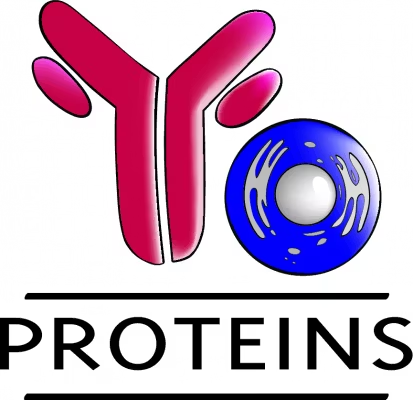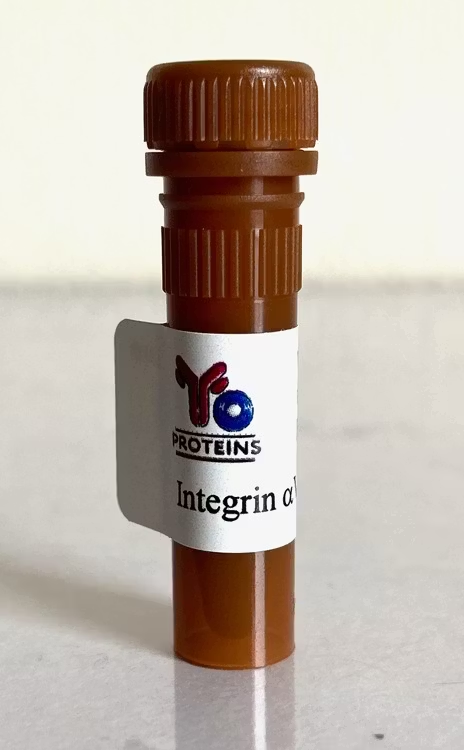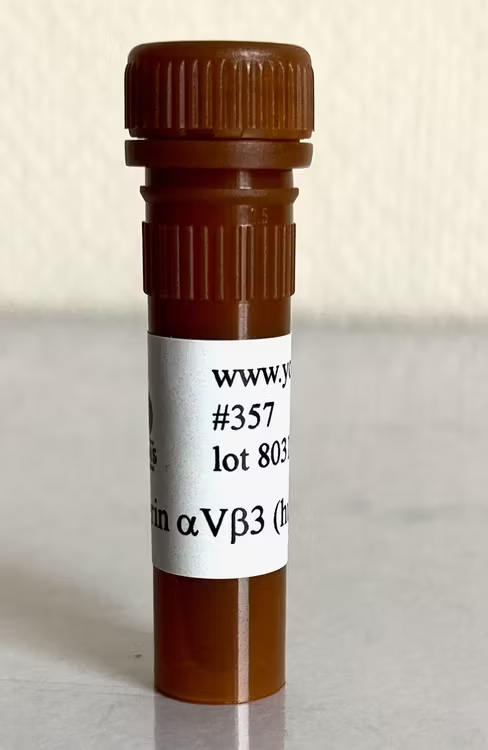357 Integrin aVb3 (human) 10 ug
0 EUR
249 EUR
Human integrin aVb3, affinity purified, lyophilized. Also known as vitronectin receptor, vitronectin integrin, CD51, CD61, ITGAV, ITGB3, VNRA, alphaVbeta3)
Source
Human placenta. Product was tested and found negative for HIV and Hepatitis B
Purity
SDS-PAGE with silver staining at least 95%. Two major bands corresponding to aV (145 kDa) and b3 (92 kDa) subunits (non-reduced conditions). A minor band (170 kDa) corresponds to b3 subunit disulphide dimer.
Format
Lyophilized from solution containing: 0.21 mg/ml aVb3, 20 mM Tris-HCl pH 7.5, 150 mM NaCl, 2 mM MgCl2, 0.2% Triton X-100
Purification
Affinity chromatography with immobilized monoclonal anti-aVb3 antibodies. A tissue detergent extract, which was applied to the column was prepared as described in (Belkin et al. 1990, J. Cell. Biol. 111:2159-2170)
Applications
Integrin aVb3 interacts with vitronectin, von Willebrand factor, fibronectin and fibrinogen in RGD dependent ELISA test. This format of aVb3 is appropriate for functional evaluation.
- Standard for electrophoresis, immunoblotting and ligand binding
- In vitro binding experiments with metalloproteinase MMP-2
Reconstitution
Water. Keep reconstituted protein at -70°C. Avoid repeated freeze-thaw cycles
Storage
Lyophilized product: shipping at ambient temperature, long-term storage at -20°C. Reconstituted protein: 1 year at -70°C
Reference
Wirkner M, Weis S, San Miguel V, lvarez M, Gropeanu RA, Salierno M, Sartoris A, Unger RE, Kirkpatrick CJ, del Campo A. (2011) Photoactivatable caged cyclic RGD peptide for triggering integrin binding and cell adhesion to surfaces. Chembiochem. 12(17):2623-9
Zhang B, Song W, Pang P, Zhao Y, Zhang P, Csabai I, Vattay G and Lindsay S (2017) Observation of giant conductance fluctuations in a protein. Nano Futures, Volume 1, Number 3
















